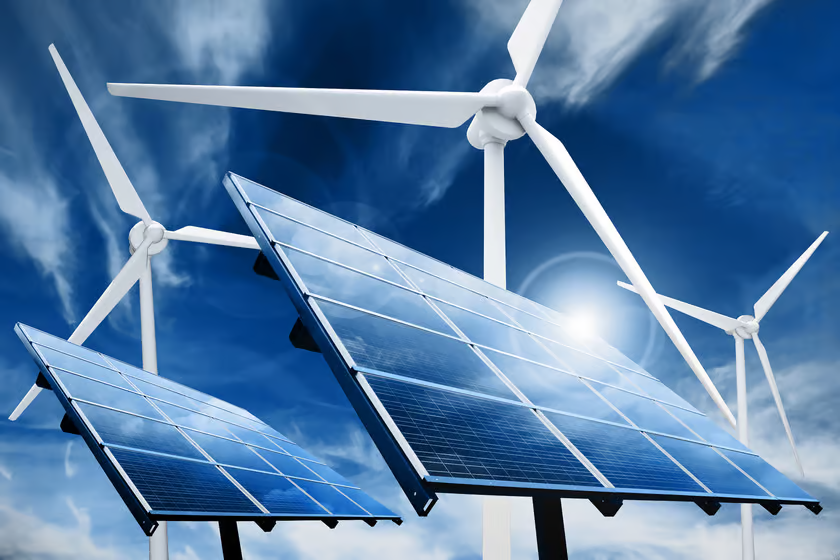In Short : The WEF report stresses the importance of a combined effort from stakeholders across the aluminium value chain, including governments, companies, and technology providers. Collaboration and investment in these three key areas are essential to reaching net-zero emissions in the aluminium industry.
In Detail : Days before the 2023 United Nations Climate Change Conference (COP28) in Dubai, the World Economic Forum (WEF) outlined three key areas of investment for the global aluminium industry to reach net zero by 2050 – clean energy, emerging technologies and decarbonization infrastructure – but it will require hundreds of billions of dollars
Production costs for low-carbon aluminium could be as much as 40% higher than for aluminium that is not low-carbon, the WEF said in its Net-Zero Industry Tracker 2023 published on Tuesday November 28.
The higher production cost will, however, translate to a 1-2% increase for consumers in end markets such as automotive and consumer goods, the report said.
“The aggregate [production cost increases] would be close to 40%, but it could be close to 100% for some countries and almost 0% for others,” a low-carbon aluminium industry source told Fastmarkets.
The source said that, for example, producers in India and China emit around 16 tonnes of carbon dioxide per tonne of aluminium produced (CO2e/t) and will need to substitute their coal power with alternative sources.
“For them, the investment [to reach net zero in their aluminium industry emissions] is more than 40%,” the source added.
But it’s different for producers in other countries where the main energy source used in aluminium production is hydropower.
“To be net-zero, they just need to buy carbon credits,” the source said.
The share of low-carbon aluminium was less than 1% of the global aluminium market in 2022, but demand is growing, as evidenced by its inclusion in the scope of the First Movers Coalition (FMC) and several offtake agreements, according to the WEF report. To meet the growing demand for low-carbon aluminium, companies are investing in secondary smelting and introducing new low-carbon brands, it said.
Fastmarkets recently launched two US low-carbon aluminium differentials in response to growing interest from the industry, following similar launches in Europe in 2021.
Still, the WEF report showed that the aluminium sector is among the eight largest emitters of greenhouse gas (GHG) by industry, and outlined three areas that it must invest in to lower emissions:
1. Clean energy
Due to the smelters’ constant need for electricity, switching to renewables might require supporting technologies like battery storage, which will add to costs, according to the WEF report.
The report said that innovative technologies allowing smelters to vary energy consumption will be key to overcome this obstacle.
Nearly 70% of the aluminium industry’s GHG emissions come from its electricity consumption during the smelting process, with up to 70% of this electricity sourced from fossil fuels, predominantly coal, the report said.
Industry participants said earlier in November that access to clean energy is needed to decarbonize primary aluminium production.
A group of aluminium buying companies met with the US Department of Energy Deputy Secretary David Turk earlier in November, asking for affordable, clean energy to be available for aluminium producers.
2. Emerging technologies and retrofitting
Other technologies that lower carbon emissions in refining and smelting, such as mechanical vapor compression (MVR) technologies and electric boilers, will address 70% of the refining energy consumption, according to the WEF report.
These technologies will increase production costs by 6-11%, it said, adding that production costs will increase by another 9% from low-carbon smelting technologies, including inert anode technologies.
Retrofitting current assets with inert anode and low-emission smelting technologies will require more than $200 billion in capital expenditure by 2050, according to the report.
But the business case for these technologies remains weak, with the industry “not positioned to absorb these additional costs and generate sufficient returns to fund through its own generated cash flows,” the report said.
To direct capital to these innovations, policy interventions – like carbon pricing, subsidies/incentives and research and development (R&D) funding – will be needed, the report said.
Large institutional investors and multilateral banks, such as the World Bank and Asian Development Bank, could provide access to low-cost capital linked to stringent emission reduction targets, the report added.
But $200 billion in capital expenditure will not be enough, and some of those older assets cannot be retrofitted to use inert cathodes, according to the low-carbon aluminium industry source.
The source estimated that around $1 trillion will be needed to bring the global aluminium production capacity to 4CO2e/t in aggregate.
“And even that just looks at the latest stage, only at [converting] smelting alumina into aluminium. It is not looking at refining and remelting bauxite into alumina,” the source said.
3. Decarbonization infrastructure
The report said that infrastructure projects to decarbonize the aluminium industry – including investments in clean energy sources, carbon dioxide transport and storage – will require a total of up to $630 billion:
• around $490 billion to establish 240GW of clean electricity capacity needed to decarbonize primary aluminium smelting processes
• around $120 billion for clean hydrogen production
• and up to $15 billion for carbon transport and storage
“A significant challenge is proximity to clean power plants, with 30% of global smelting facilities currently at risk of having no access to clean power. These plants will either need to relocate or adopt CCUS [carbon capture, usage, and storage] technologies,” according to the report.
The report comes days ahead of the COP28 summit held in Dubai from Thursday November 30 to December 12.
WEF’s Net-Zero Industry Tracker keeps track of steel, cement, aluminium, ammonia, oil and gas, aviation, shipping and trucking industries that emit 40% of the total global GHGs.
According to the report, a total of $13.5 trillion in investments is needed to fast-track decarbonization in all of these sectors.

